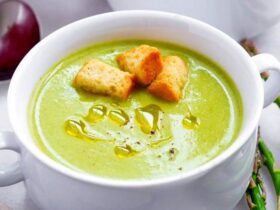Food is more than just sustenance—it’s an experience. Over the years, it has transformed into an art form that tantalizes not just our taste buds, but all of our senses.
As the world evolves and societies blend, we’re witnessing an era where culinary arts meet interior design to create a complete dining experience.
In this article, we will dive into some of the most intriguing cuisine trends and how they are influencing our dining spaces, making them as much a feast for the eyes as the food is for the palate.
1. Fusion Cuisine – A Blend of Cultures
One of the most prominent trends in recent years is the rise of fusion cuisine. Chefs are increasingly blending ingredients, techniques, and flavors from different parts of the world to create dishes that are both familiar and new.
Think of a spicy tuna, sushi, taco, or chocolate samosa. The beauty of fusion cuisine is its unpredictability and the delightful surprises it brings with every bite.
2. Farm to Table – The Freshness Revolution
As people become more health-conscious and environmentally aware, there’s a shift towards fresh, local, and organic produce. Restaurants are sourcing ingredients from local farms, ensuring that the food is fresh and has a smaller carbon footprint.
This trend is not just about what’s on the plate but extends to restaurant décor too, with greenery, rustic wood, and earthy tones dominating the interiors.
3. Molecular Gastronomy – The Science of Food
Molecular gastronomy, a subdiscipline of food science, seeks to investigate the physical and chemical transformations of ingredients that occur during cooking. This trend, though not new, has seen a resurgence.
Liquid nitrogen ice creams, foams, spheres, and gels – this cuisine trend turns any meal into a scientific experiment. The spaces where these dishes are served often have a contemporary and minimalist vibe, making the food the star of the show.
4. Plant-Based & Vegan Delicacies
With a rising consciousness towards healthier eating habits and a sustainable lifestyle, plant-based and vegan diets have skyrocketed in popularity. We’re seeing an increased variety of plant-based options on menus, from mushroom steaks to jackfruit tacos.
As this trend grows, so does the demand for dining spaces that reflect a connection to nature—think indoor plants, natural light, and sustainable materials.
5. Interactive Dining Experiences
Gone are the days when dining out was just about eating. Now, it’s an immersive experience. Whether it’s DIY taco stations, sushi conveyer belts, or hot pots, interactive dining has made its mark. Such experiences require a particular kind of setting, often open, spacious, and adorned with pieces that accentuate the interactive nature of the meal.
Speaking of enhancing the dining experience with aesthetic elements, integrating decorative pieces into these spaces is pivotal. Decorative pieces for culinary spaces have seen an evolution in their design, incorporating elements of these cuisine trends.
Whether it’s art pieces that capture the essence of fusion cuisine or designs that embody the farm-to-table ethos, the décor has become an integral part of the modern dining space.
6. Tech-Infused Dining
The integration of technology in our meals extends beyond just online food delivery apps. From menus projected onto tables to AI-driven food pairings and even virtual reality dining experiences, technology is reshaping our dining experiences. Such tech-forward dining spaces often have sleek, modern designs with futuristic elements.
7. Sustainability at the Forefront
More than just a trend, sustainability has become a movement. This goes beyond just sourcing sustainable ingredients. It’s about zero-waste kitchens, compostable or reusable packaging, and even decor made from recycled materials. The entire dining experience, from the food to the furnishings, reflects a commitment to the planet.
Conclusion
The culinary world is in a constant state of evolution. As cultures merge, technologies advance, and global challenges emerge, our food and the spaces we enjoy them in reflect those changes.
It’s a delightful dance between tradition and innovation, taste and aesthetics, and comfort and exploration. As we savor the flavors of today’s cuisine trends, we can only wonder what delightful innovations tomorrow will bring to our plates—and our dining spaces.















